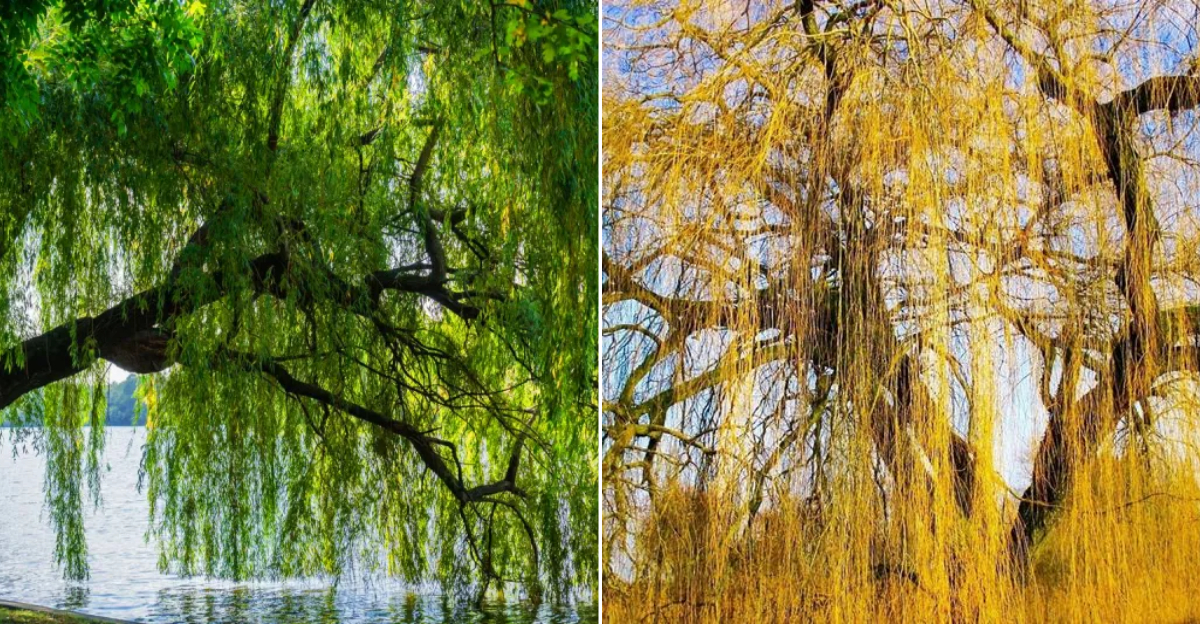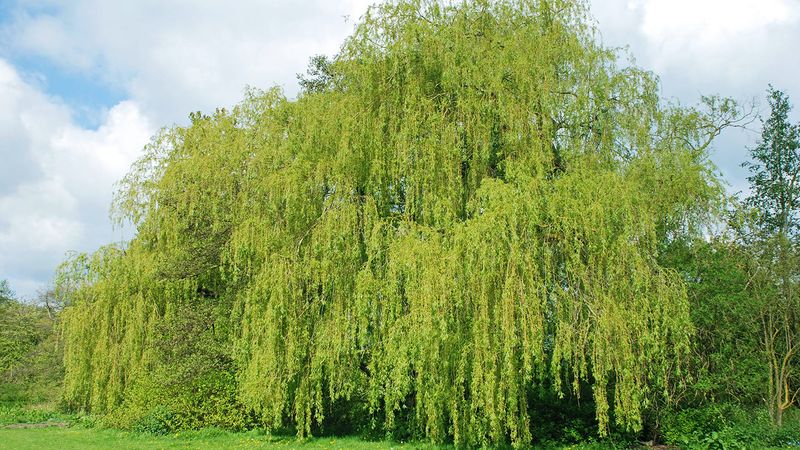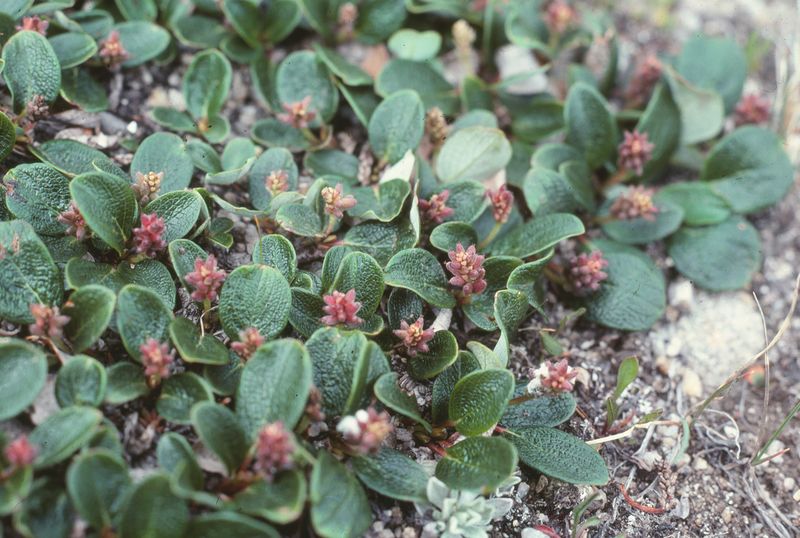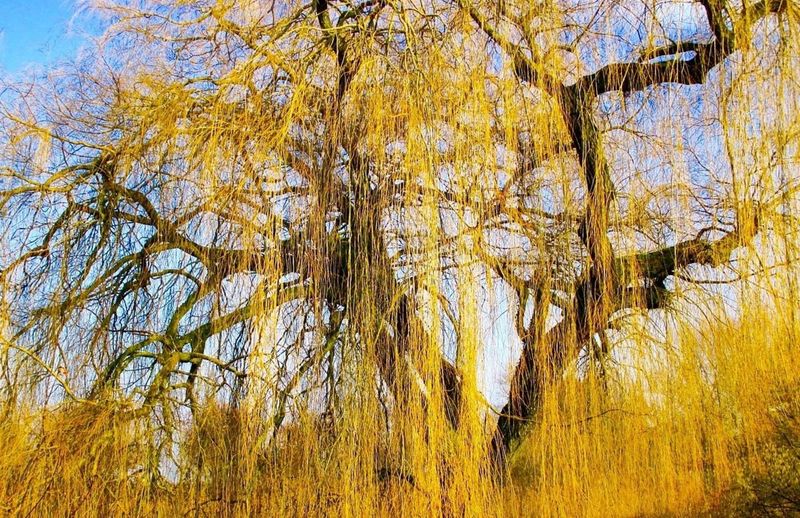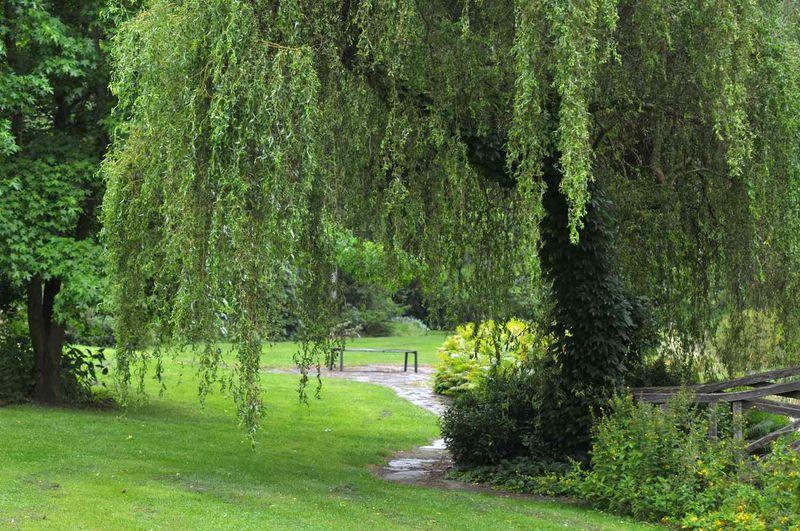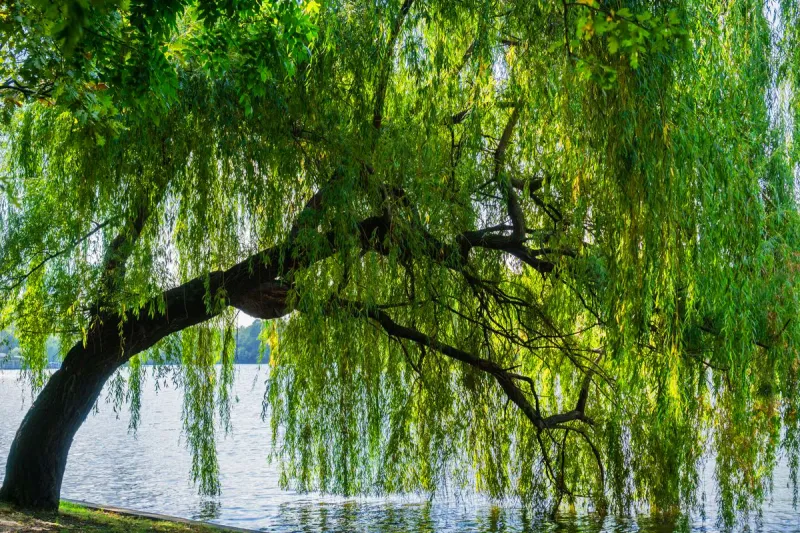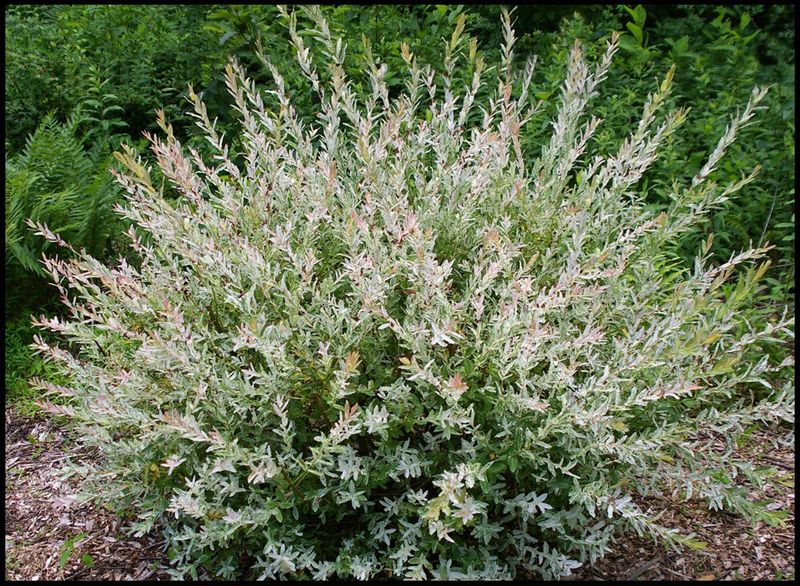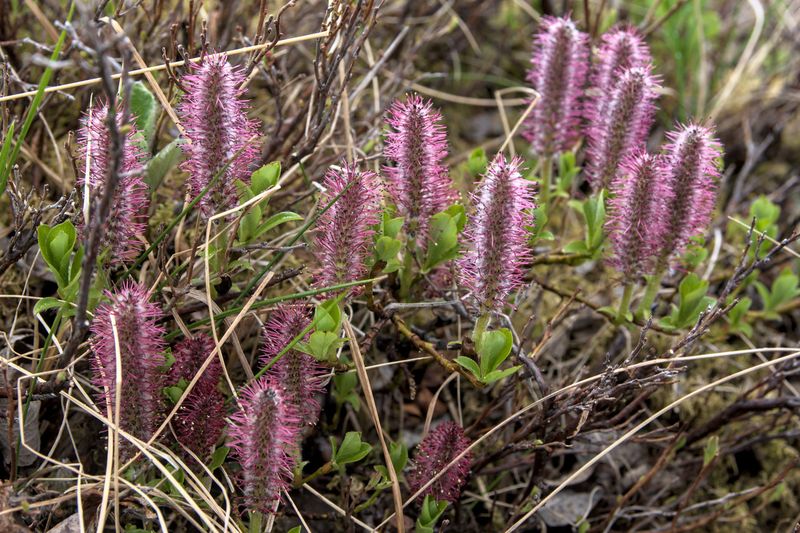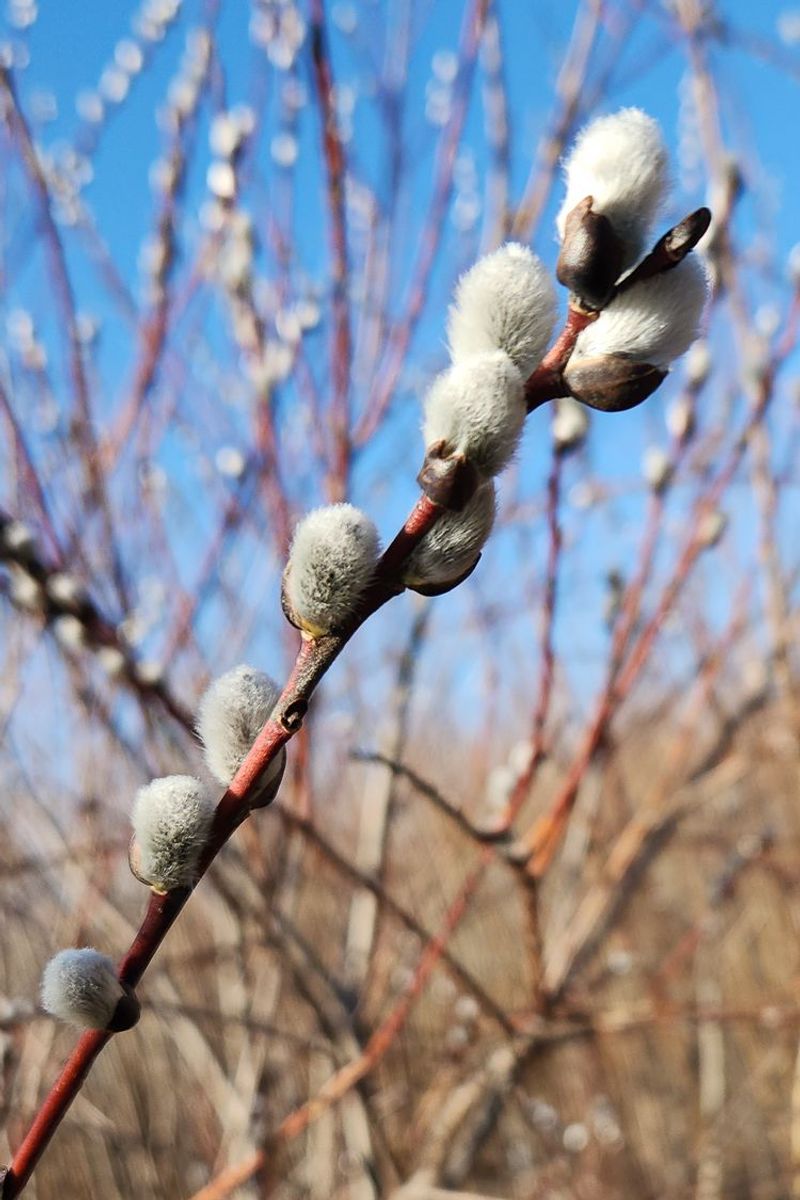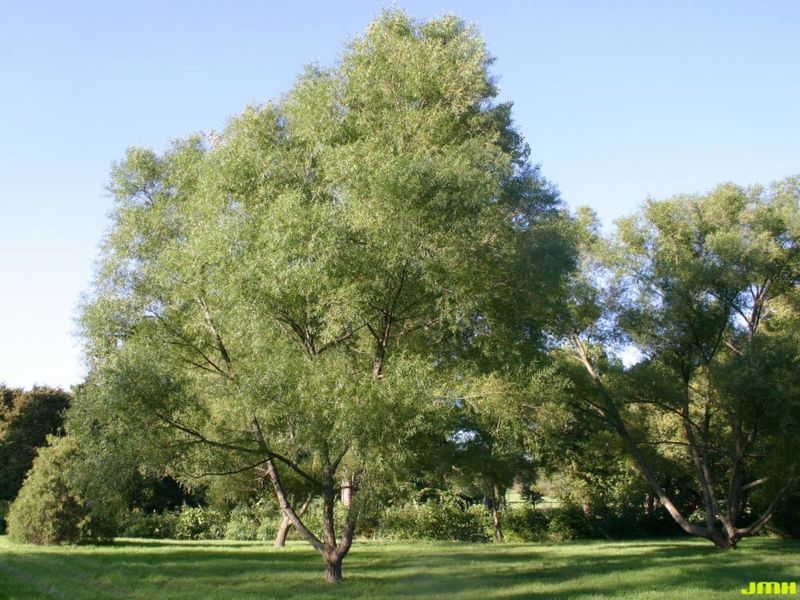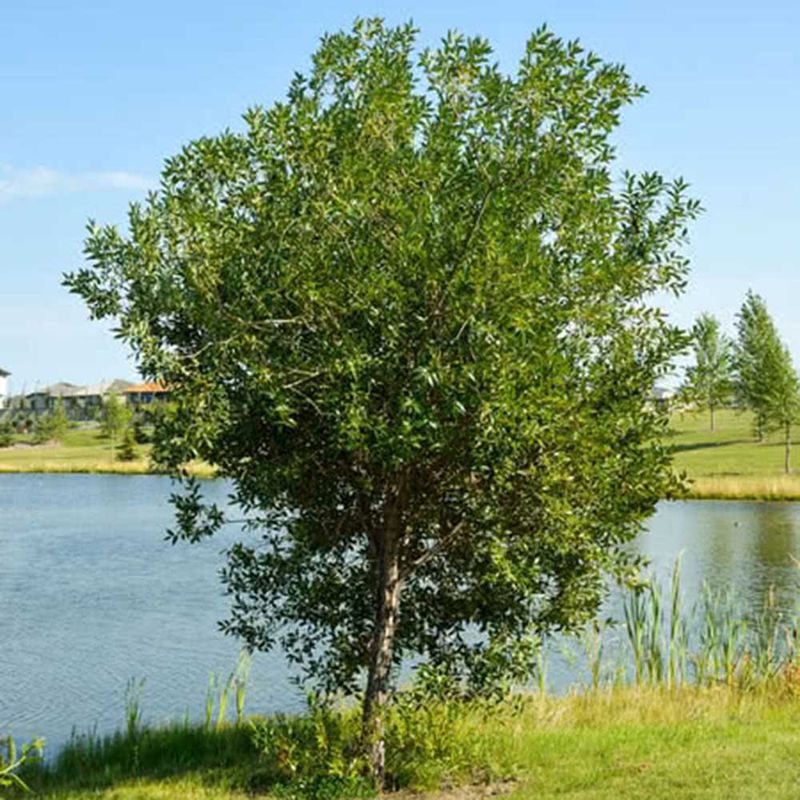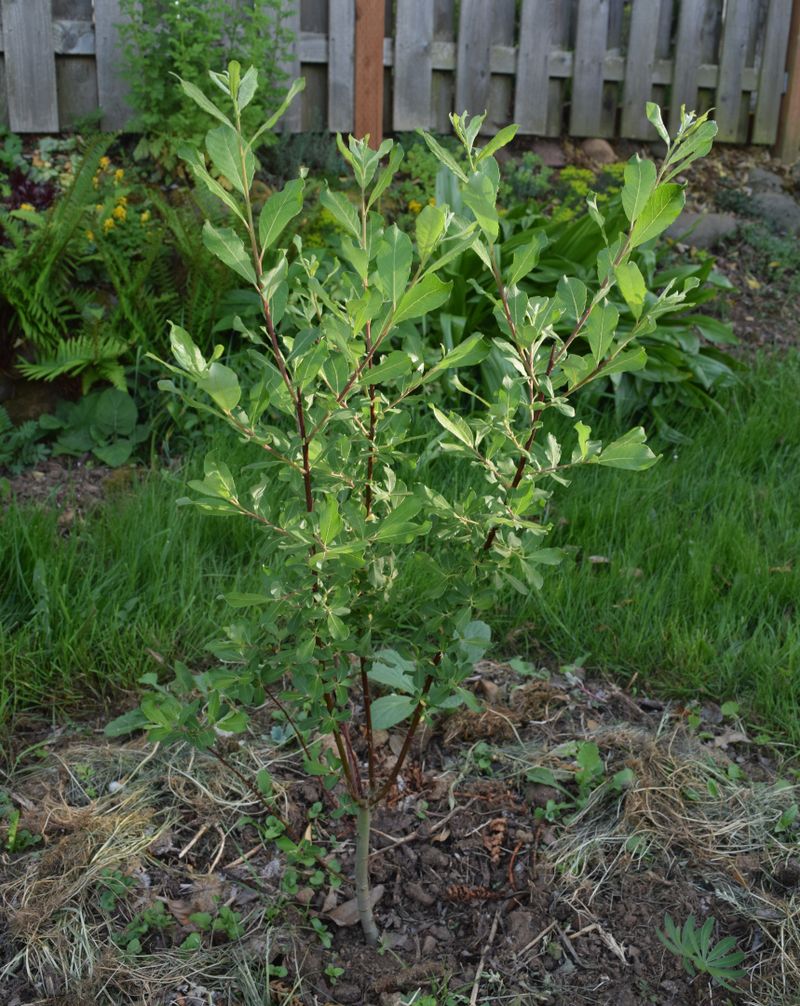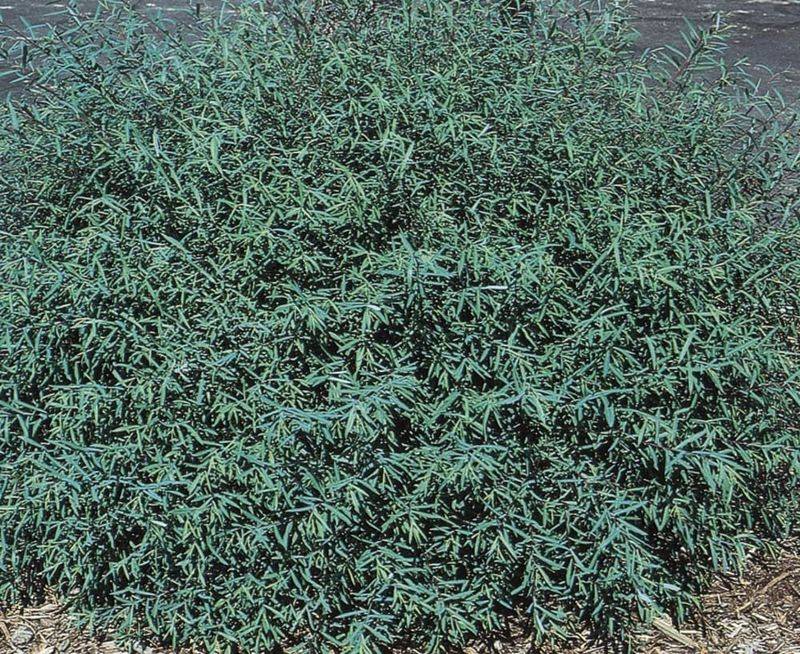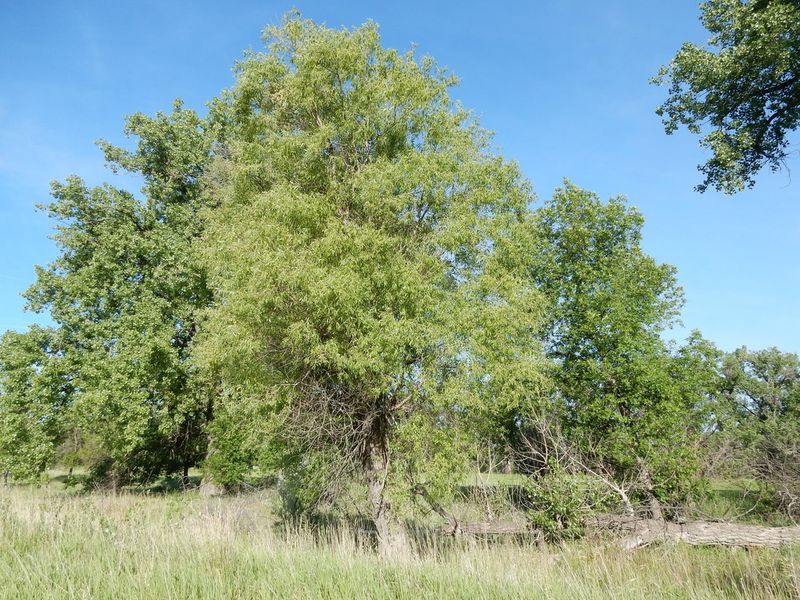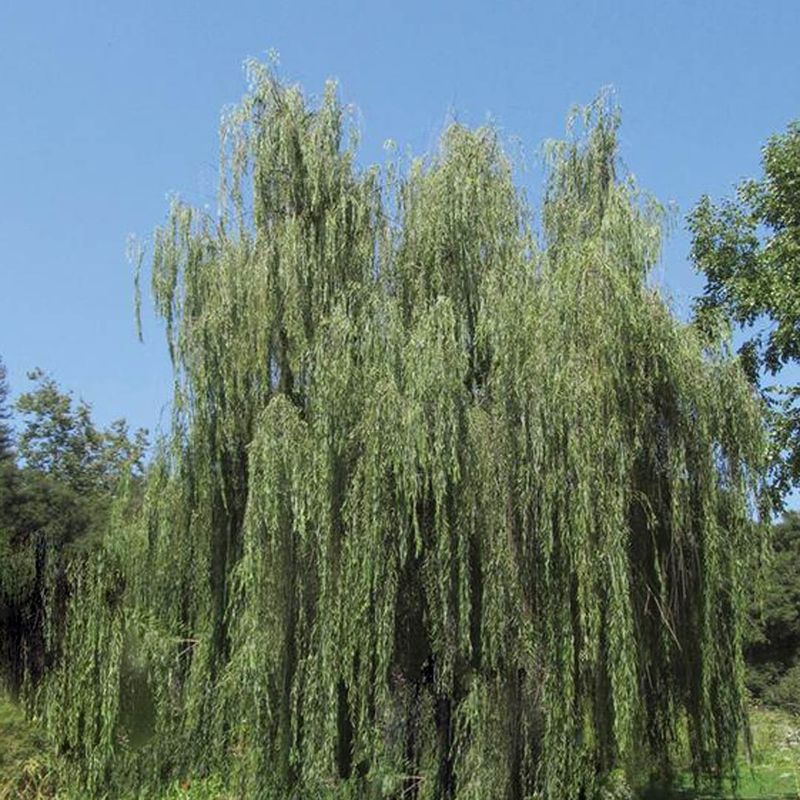Willow trees are enchanting additions to any garden or landscape, known for their graceful, flowing branches and lush foliage. These trees offer more than just beauty; they contribute to the ecosystem by providing shade, shelter, and even erosion control.
Here, we explore 15 stunning varieties that can enhance the magic of your outdoor space, each bringing its own unique charm and characteristics.
1. White Willow
The White Willow is known for its striking silver-green foliage and robust growth, making it a standout in any landscape. Its tall, slender form can reach impressive heights, offering both beauty and shade.
This tree is not only visually appealing but also highly resilient, adapting well to various soil types and conditions. Its wood is often used in the production of cricket bats, highlighting its strength and flexibility.
The White Willow’s shimmering leaves add a touch of elegance and movement, capturing sunlight in a dazzling display, making it a captivating addition to open spaces.
2. Dwarf Willow
The Dwarf Willow offers the beauty of willow trees in a compact form, perfect for smaller gardens or rockeries. Its low-growing, bushy appearance adds texture and interest to landscapes without overwhelming space.
This variety thrives in well-drained soil and can even grow in colder climates where larger willows might struggle. Its subtle presence complements other garden plants, enhancing overall aesthetics.
Despite its small size, the Dwarf Willow is not short on charm, providing a unique touch to garden designs and making it an excellent choice for gardeners with limited space.
3. Golden Willow
The Golden Willow is a vibrant addition to any garden, distinguished by its yellow-hued branches that glow brilliantly in the sun. Its striking color adds warmth and contrast, especially during the winter months when the landscape can appear barren.
This variety thrives near water, contributing to the ecosystem by stabilizing banks and providing habitat for wildlife. Its rapid growth and bright appearance make it a favorite among landscapers looking to add a splash of color.
Whether used as a focal point or part of a larger design, the Golden Willow’s allure is undeniable, transforming any space.
4. Corkscrew Willow
The Corkscrew Willow, with its distinctive twisted branches, brings a whimsical touch to gardens. Its curly leaves and unusual shape create visual interest, making it a stunning focal point in any setting.
This tree is not just about looks; it also offers quick growth and adaptability, thriving in a variety of soils. Its unique appearance provides winter interest when other trees may look bare.
The Corkscrew Willow’s playful structure makes it a favorite for artistic landscapes, adding texture and intrigue to outdoor spaces, perfect for those seeking something truly different and eye-catching.
5. Weeping Willow
The Weeping Willow stands as an iconic symbol of grace and elegance in landscaping. Its long, drooping branches create a serene atmosphere, making it an ideal centerpiece by a pond or stream.
Typically found near water, its roots help stabilize soil, preventing erosion. This tree not only enhances the visual appeal but also serves practical purposes in managing wetland environments.
Its lush, green foliage provides a natural canopy, offering shade and privacy. Whether in a large estate or a cozy backyard, the Weeping Willow’s charm is unmatched, making it a beloved choice for any landscape.
6. Nishiki Willow
The Nishiki Willow, celebrated for its variegated leaves with pink tips, adds a splash of color and texture to gardens. Its elegant foliage brings a unique visual appeal, especially during spring when colors are most vibrant.
Ideal for adding a touch of the exotic, this willow variety thrives in moist soils, making it perfect for planting near water features. Its moderate size allows it to fit into diverse landscapes without overpowering other elements.
The Nishiki Willow’s stunning color palette offers a striking contrast, enhancing garden aesthetics and creating a tranquil and picturesque environment.
7. Arctic Willow
The Arctic Willow is a hardy variety, thriving in cold climates where few other trees can survive. Its compact, shrub-like form is perfect for adding structure to gardens in frigid regions.
With dense, fuzzy leaves, it provides a lush green backdrop even in harsh conditions. This willow is ideal for erosion control and stabilizing soil in challenging environments.
Its resilience and adaptability make it a valuable addition to gardens seeking year-round interest. The Arctic Willow’s ability to withstand extreme temperatures while maintaining its beauty makes it a remarkable choice for northern landscapes.
8. Pussy Willow
The Pussy Willow is cherished for its soft, fuzzy catkins that emerge in early spring, signaling the end of winter. Its unique texture and appearance make it a favorite for floral arrangements and seasonal decorations.
This willow thrives in wet soils, often found along streams and wetlands. Its versatility allows it to be used as a hedge or a standalone feature in gardens.
The Pussy Willow’s charming catkins not only add visual interest but also offer early pollen for bees, supporting local wildlife. Its delightful presence brings a touch of nature’s renewal to any landscape.
9. Black Willow
The Black Willow is distinguished by its dark, furrowed bark and slender branches, often found along riverbanks where it thrives. It plays a crucial role in preventing soil erosion and providing habitat for wildlife.
This willow’s narrow leaves and graceful form add a subtle elegance to natural landscapes. Despite its understated appearance, the Black Willow is incredibly resilient, adapting well to wet conditions.
Its presence in a garden can enhance ecological diversity, offering shelter and food for various species. The Black Willow’s practicality and beauty make it a valuable asset to any riverside setting.
10. Shining Willow
The Shining Willow, known for its glossy, bright green leaves, adds a lively element to gardens. Its vibrant foliage catches the light beautifully, creating a shimmering effect that enchants onlookers.
This willow thrives in moist, well-drained soils, making it a great choice for gardens with adequate water access. Its moderate size and elegant appearance allow it to blend seamlessly with other plants.
The Shining Willow’s bright leaves and appealing structure make it a wonderful choice for anyone looking to add a touch of vitality to their outdoor space, transforming ordinary gardens into dazzling displays.
11. Laurel Willow
The Laurel Willow stands out with its broad leaves and robust branches, offering ample shade and a strong presence in landscapes. Its thick foliage creates a lush, green canopy, perfect for parks or large gardens.
This tree is highly adaptable, growing well in various soil types and conditions. Its resilience and beauty make it a popular choice for urban and rural settings alike.
The Laurel Willow’s substantial form provides not only shade but also a sense of tranquility and permanence, enhancing the natural beauty of its surroundings and offering a peaceful retreat from the sun.
12. Scouler Willow
The Scouler Willow is native to mountainous regions, known for its rugged appearance and adaptability. Its broad, dark green leaves provide a dense canopy, offering shade and shelter in challenging environments.
This willow’s hardy nature allows it to thrive in rocky, poor soils where few other trees can survive. Its ability to withstand harsh conditions makes it an excellent choice for restoration projects.
The Scouler Willow’s resilience and strength, combined with its natural beauty, make it a valuable addition to landscapes seeking to restore or enhance native vegetation, promoting biodiversity and environmental balance.
13. Purple Osier Willow
The Purple Osier Willow is celebrated for its slender purple branches, which add a splash of color to gardens, particularly in the spring. Its long, narrow leaves create a delicate, airy appearance that sways gently in the breeze.
This willow is often used in basket weaving, thanks to its flexible branches. It’s a favorite for gardeners looking to introduce subtle color contrast and texture.
The Purple Osier Willow’s vibrant branches and graceful form provide both visual appeal and practical utility, making it a versatile and attractive option for various landscape designs.
14. Peachleaf Willow
The Peachleaf Willow, named for its peach-colored bark, offers a unique and charming aesthetic to landscapes. Its elongated leaves and graceful form create a soft, inviting look, perfect for pond-side planting.
This willow thrives in wet conditions, contributing to waterway stabilization and erosion control. Its beautiful bark and foliage provide year-round interest, enhancing garden designs with subtle color and texture.
The Peachleaf Willow’s combination of visual appeal and environmental benefits makes it a popular choice for those looking to beautify and support natural ecosystems.
15. Wisconsin Weeping Willow
The Wisconsin Weeping Willow, a variant of the classic weeping willow, boasts gracefully arching branches and dense foliage, offering a stunning visual display. Its elegant form creates a peaceful, shaded retreat, ideal for large gardens.
This willow adapts well to various soil types, making it versatile for different landscapes. Its presence not only enhances beauty but also supports wildlife by providing shelter and habitat.
The Wisconsin Weeping Willow’s timeless elegance and adaptability make it an excellent choice for those seeking to add a touch of tranquility and majesty to their outdoor spaces.
